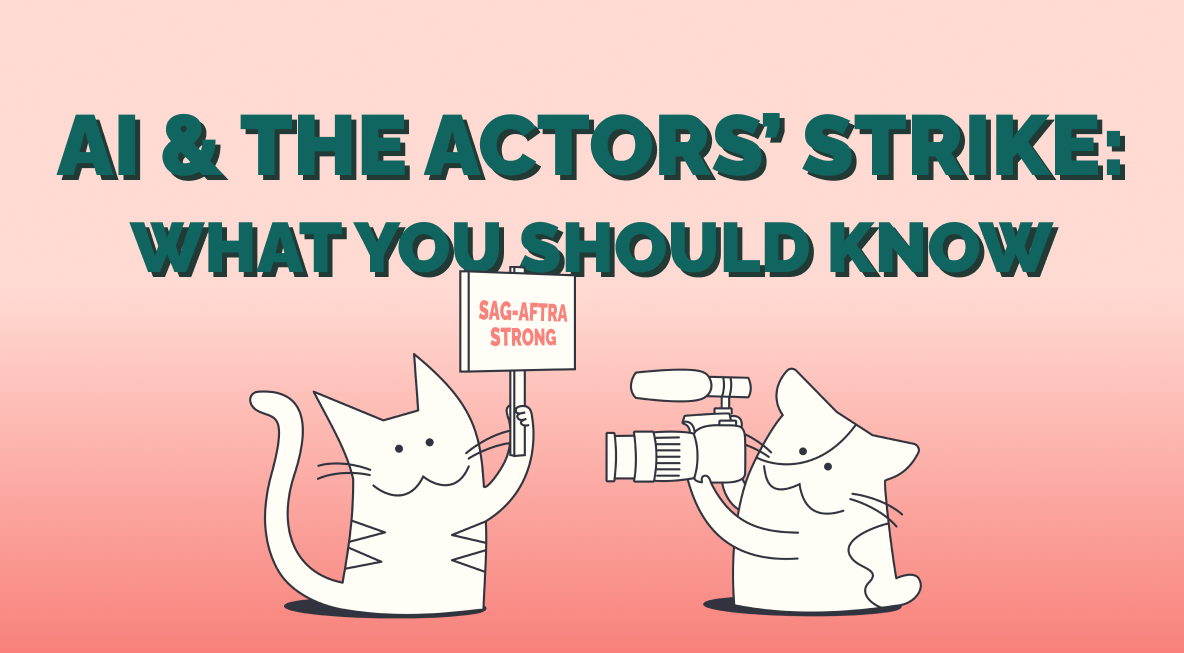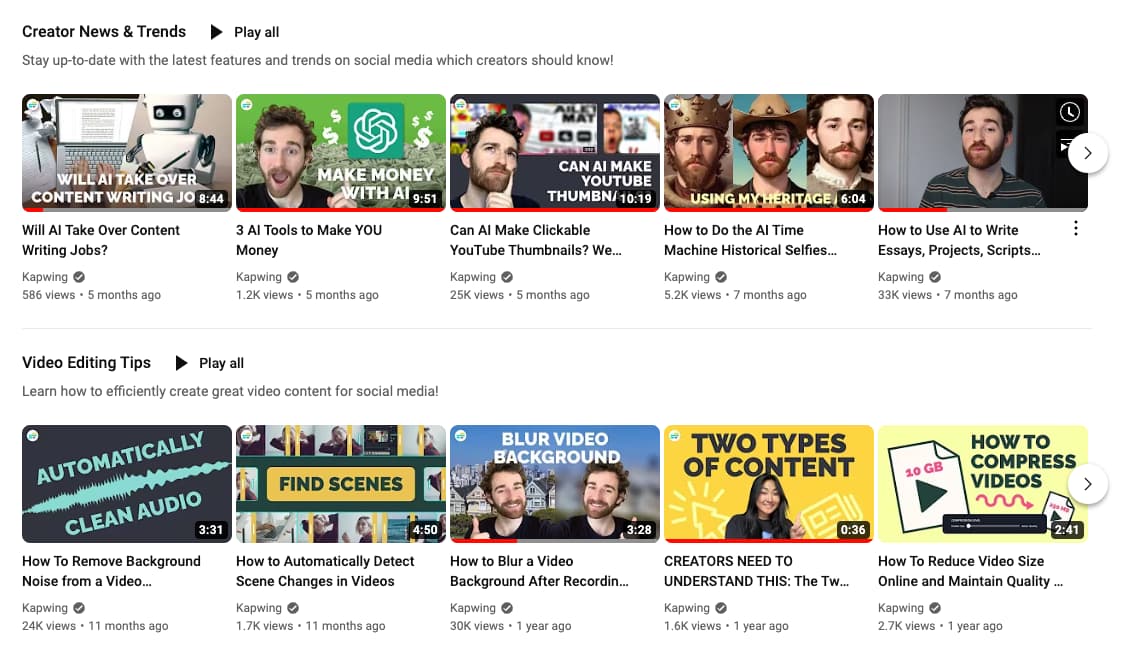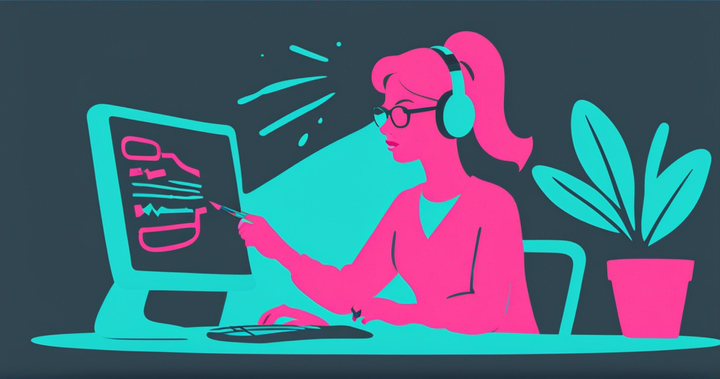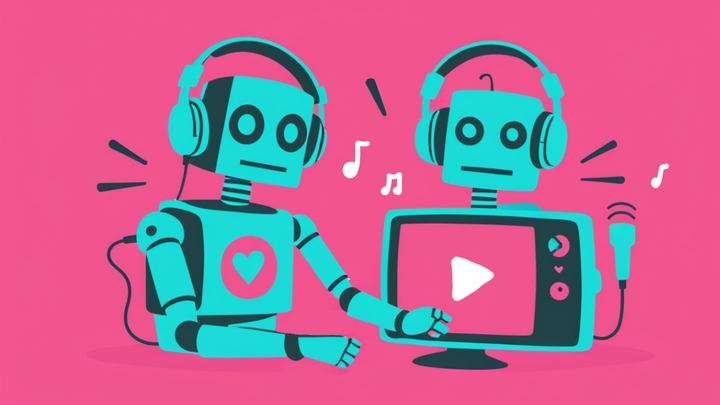Why SAG-AFTRA Members on Strike Are Talking About AI
SAG-AFTRA members call out AI concerns amid strike. The outcome will set a precedent for on-screen talent in all industries, including yours.

Artificial intelligence seems to be a hot topic everywhere, even amid the upheaval in Hollywood.
SAG-AFTRA members have been on strike since July 14, 2023 in a dispute with the Alliance of Motion Picture and Television Producers (AMPTP). They’re asking for a more equitable division of profits from movies and television, especially from streaming services. SAG-AFTRA represents some 160,000 actors, voice actors, journalists, DJs, hosts, and others.
AI has become a hot-button issue in the strike because movie and television studios are eager to use the technology in their productions. How this shakes out will inevitably set a precedent for any brand that works with both AI and on-screen talent.
A negotiation offer from AMPTP included a “groundbreaking AI proposal which protects performers’ digital likenesses, including a requirement for performer’s consent for the creation and use of digital replicas or for digital alterations of a performance.”
Duncan Crabtree-Ireland, SAG-AFTRA’s chief negotiator, responded quickly with concern.
“They proposed that our background performers should be able to be scanned, get paid for one day’s pay, and their company should own that scan ... to be able to use it for the rest of eternity.”
— The Recount (@therecount) July 13, 2023
— SAG-AFTRA Director Duncan Crabtree-Ireland reveals the AMPTP’s AI proposal pic.twitter.com/ND7BzCR0nX
“This ‘groundbreaking’ AI proposal that they gave us yesterday, they proposed that our background performers should be able to be scanned, get one day’s pay, and their companies should own that scan, their image, their likeness and should be able to use it for the rest of eternity on any project they want, with no consent and no compensation,” Crabtree-Ireland said at a press conference.
“So if you think that’s a groundbreaking proposal, I suggest you think again.”
AMPTP spokesperson Scott Rowe then responded with his own statement, denying Crabtree-Ireland’s characterization of the provision.
“The claim made today by SAG-AFTRA leadership that the digital replicas of background actors may be used in perpetuity with no consent or compensation is false,” he said.
“In fact, the current AMPTP proposal only permits a company to use the digital replica of a background actor in the motion picture for which the background actor is employed. Any other use requires the background actor’s consent and bargaining for the use, subject to a minimum payment.”
The exact wording of AMPTP’s AI proposal remains unclear, but the debate has highlighted how AI is changing Hollywood productions and anxiety from actors about its use.
As Fran Drescher, president of SAG-AFTRA, put it, “artificial intelligence poses an existential threat to creative professions, and all actors and performers deserve contract language that protects them from having their identity and talent exploited without consent and pay.”
The issue has become so hot that Tom Cruise made an appearance during negotiations between the two sides, urging AMPTP to listen to actors’ concerns about the use of AI.
Tom Cruise urged the AMPTP to hear out SAG-AFTRA's concerns on AI and support the guild’s position on stunt performers. He also asked the performers union to allow stars to promote films given the fragile state of movie theaters https://t.co/uFDbVRB4vC pic.twitter.com/WbdLVbfRKI
— The Hollywood Reporter (@THR) July 17, 2023
It’s also become a common talking point for strikers on the front lines. Actor Sean Astin talked to Deadline Hollywood about the issue from the picket line.
Sean Astin, SAG-AFTRA negotiating committee, on AI discussions with the AMPTP: “The producers across the table just wouldn’t engage, wouldn’t really talk about what’s at stake...” #ActorsStrike pic.twitter.com/4bhWn2LpFp
— Deadline Hollywood (@DEADLINE) July 14, 2023
According to Astin, the producers weren't willing to negotiate with SAG-AFTRA on the AI proposal at all.
SAG negotiates day rates with studios, setting a minimum payment per day. Although A-listers can make millions from a single production, the majority of members aren’t raking in that kind of cash. The strike is really about the day-to-day performers trying to make a living in Hollywood.
As CNN reported, the average actor in California makes $27.73 per hour. SAG has minimum rates set for different types of work, which you can explore here. For example, if you’re playing a major role in a single episode of an hour-long program, your minimum pay is $9,522 per week.
What’s also important to note is that by the nature of the job, actors don’t work consistently. They also don’t get to keep all of that pay. On top of taxes, actors have agents, managers, and other stakeholders to pay.
Background actors make much less — the current rate is $187 per day. This is a primary area of concern as a studio could use AI for all background actors.
If studios are able to use an AI likeness, the possibility is that they’d only have to pay an actor a single day rate to scan their face and body. Then, they could continue to use that actor’s likeness for an entire production, despite only having paid the actor for a single day. The obvious concern is that actors will earn even less, even as their face is still being used in productions.
The other issue is residuals.
Residuals are paid to SAG-AFTRA members for use of a production beyond its original scope, like reruns of a television show or when an older movie plays on TV. Or when a show or movie gets added to Netflix (although remember, the lack of streaming residuals is one of the most contentious factors in these negotiations). Wherever the residuals are coming from, it’s unclear whether an actor whose AI likeness is used would even be eligible for residual pay.
An example would be a recurring character in commercials — think Flo from Progressive ads. Under this framework, Progressive could create an AI replica of actor Stephanie Courtney, who plays Flo, and create new commercials using her face, body, and voice, but without paying Courtney for each new production.
If studios gain the ability to use an actor’s AI likeness in perpetuity, it sets a dangerous precedent that will ripple across many industries. Many brands now have familiar faces used in company materials, from social media posts to webinars.
Here at Kapwing, for example, our own Jack Dodge leads our presence on YouTube.

Theoretically, we could create an AI likeness of Jack to use in future videos — instead of Jack himself and without paying him for the new videos. And in a future where studios and businesses are free to create and own these AI likenesses, that would be allowed... no matter how unethical it sounds.
But that’s not a future Kapwing wants or endorses.
AI should be a tool used to support creative endeavors, not stifle or steal from creatives. AI is incredibly useful technology in video production, as seen in Kapwing’s own suite of AI tools. And it’s not the future, it’s the present — AI movie generators and video editing AI are already being used.
The purpose of this AI technology shouldn’t be to replace jobs, but to make existing jobs easier.
AI in video production takes tedious tasks like editing or subtitle generation and makes them faster and automated. The goal is to free up creatives’ time so they can iterate faster and push the limits of their work — and that’s good for everyone.
We want a future with more creative professionals, not fewer. The type of AI SAG-AFTRA is concerned about threatens the livelihoods of not just Hollywood actors, but of everyone involved in video production, from the silver screen to niche industries.
An expert told CNN that he estimates that the SAG-AFTRA strike could cause up to $4 billion in damage as productions come to a halt and industry professionals remain on picket lines. If Hollywood producers want to end the strike and satisfy striking workers, they’ll have to address actors’ concerns about AI.
Related Articles:
Create content faster with Kapwing's online video editor →








